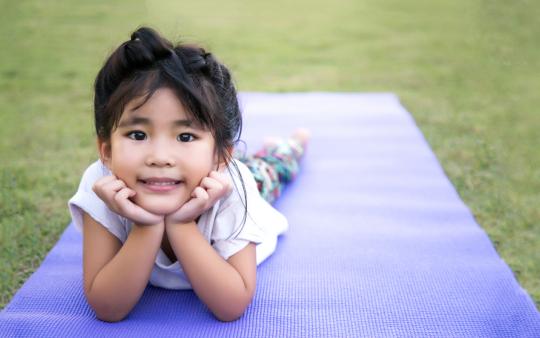As my son was eating his lunch one day, sitting on a floor pillow in the living room, I watched him stare out the window deep in thought. Knowing these moments pass quickly, I grabbed my camera and snapped a few frames while my twin toddlers scurried around me. Looking at this photo now, I see my four-year-old boy, but I also see a young man deep in thought with a strikingly familiar look of contemplation on his face that makes me think of my father. I didn’t even see this at the time, but the photograph, now printed, has found a home on our wall with many others in a collage that tells the story of our family: who these little creatures are and how they have changed our lives. A few photography tips can ensure more frameable moments.
I’m not against the standard family portrait, but as a professional family photographer and a mother, I’ve seen how authentic moments captured move us in a much deeper way. We all have the "Everyone look here and smile!" photograph, but it’s the candid images that make us sigh and bring a loving tear to our eye as we hold a photograph of a loved one engaged in a moment so beautiful and honest it’s breathtaking. A head thrown back in full belly laughter, children running through the grass, faces buried in books, cuddles with loved ones, or the intense look of concentration. These are the moments that I love to capture of my own as well as my clients’ children. These are the moments that are so preciously fleeting. So, let’s dust off your camera and get you capturing your family memories before the kids have grown and left the coop!
Light
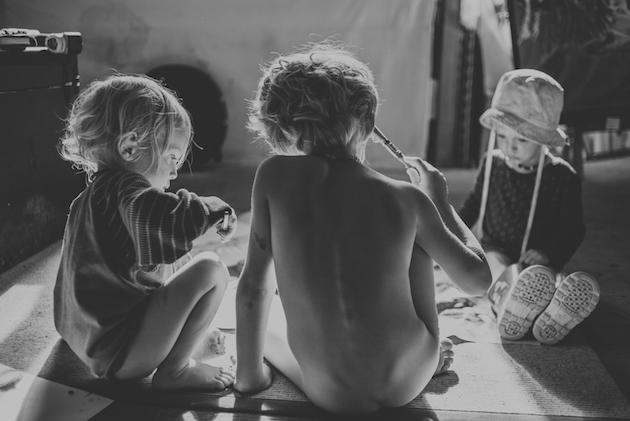
Light is so important in a photograph, it sets the mood and tone for your image. Luckily you don’t need any flashes or fancy cameras to capture it. Look for bright locations in your home or big windows in living rooms; kitchens and bedrooms are also great. Side lighting is quite beautiful and dramatic, so position yourself where you can get it. The closer the subject is to the light source, the more dramatic the lights and darks are. When the light is diffused (through a curtain or under open shade for example) or your subject is farther away from the light source, the softer and subtler the lights and darks are. So long as the space is bright enough that you don’t need your flash, you’re good!
Natural light is always my preference. It’s the most beautiful and does wonderful things in a photograph. Lamps and ceiling lights cause terrible downward shadows under the eyebrows and nose, although if it's dark out, use what you have and see if you can make it work! If you have very little knowledge about exposure, stick with fully automatic for now. If you want to take one step towards more exposure control, set your camera to "portrait" for images with one or two people and "action" or "sport" for when they are running around. These settings are designed to help you take photos in specific situations, so use them! If you’re feeling daring, switch your camera to "A" or Aperture Priority. When photographing 1-3 people who are close together, keep the aperture as its lowest available number (f2.8 up to f4); the more people you include or the father away they are from each other, the higher the number should be (f5.6 to f9). These settings allow us to focus either just the face or make sure we have everything in focus. This is called "depth of field". This step alone can have dramatic results for your portraits.
Creative tip: backlighting
Try taking backlit portraits, where the light source is behind the subject. Depending on your exposure, you can create airy haloed images or dramatic silhouettes (be sure to get the profile).
Composition

This is where you can get really creative, so work the space and find the best angle. Usually what I do is get a "safe" shot first, capturing the moment quickly before it passes. Then, if the moment lingers, I get a bit closer, looking through the camera to find something interesting. I like to give the photo context, so keep in the stacks of books or laundry, or if you’re outside, don’t be afraid to frame the image as if it’s a landscape with a child at the bottom. This helps to tell a story, giving information about the moment or space that you wouldn’t get with a close-up portrait. As you get closer, you can cut out those extras and get a more intimate photograph, click, get closer, click, move around to the other side and recompose. Make sure to snap a lot of images as we all know kids move quickly and expressions can change in the blink of an eye! You can always go through them later and keep just your favorites (but please do this on your computer where you can get better sense of the photograph and double-check for focus!).
Creative tip: create a frame
One of my favorite things to do is to create a frame within a frame by photographing through things. I often push my camera through a plant (yes, even a house plant) to frame a moment with leaves around, or shoot through a doorway or window.
Moment
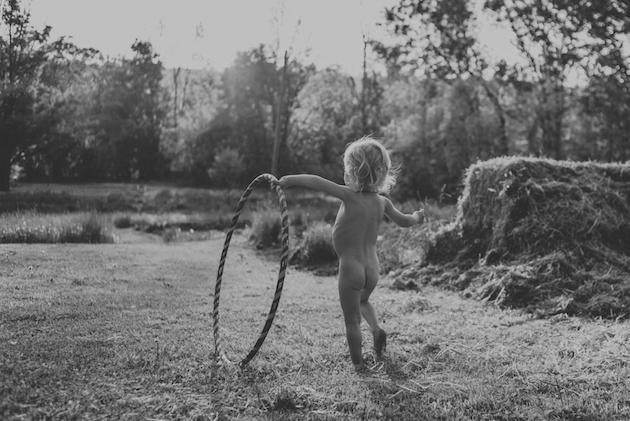
Catching the moment; that’s what every photographer strives to do when they pick up their camera. You can have great light and composition and make a wonderful photograph, but if you capture a moment, it’s entirely different. It pulls on the heart strings. Capturing the moment takes only one thing – patience. When you have your shot set up and you’ve taken a few frames, sit and wait. Sometimes nothing interesting happens at all and that’s fine, but other times something wonderful happens: a tender touch between siblings, or complete hilarity as they throw pillows across the room. Sometimes it’s the moment itself that captures your attention and you get your camera out just in time.
There are certain situations in which great photographic moments happen easily, so get out your camera and be prepared. This means you should always have your camera easily accessible! Don’t stow it away in the back of the closet or tucked away in the office, keep it where you can get it easily. Mine is often sitting on top of my fridge or tucked into my camera bag beside the couch. I can grab it within seconds of seeing a moment develop, and be ready to click when the moment happens. That doesn’t mean I get it every time of course… And frankly, some days I don’t feel like taking pictures at all. But when we’re baking cookies in the morning and the light is streaming into the kitchen, the children are covered in flour, I’m there with my camera in hand (between managing cookie-related crises). And once in a while (don’t tell anyone) I grab my phone to snap a few quick ones if my camera is too far away.
Creative tip: make it fun!
If you’re looking to create some fun moments, then give the kids bubbles, encourage them to smoosh their faces on the window with you on the other side, bring out a special toy or snack or bring them all to the beach. Create situations where moments happen frequently and easily.
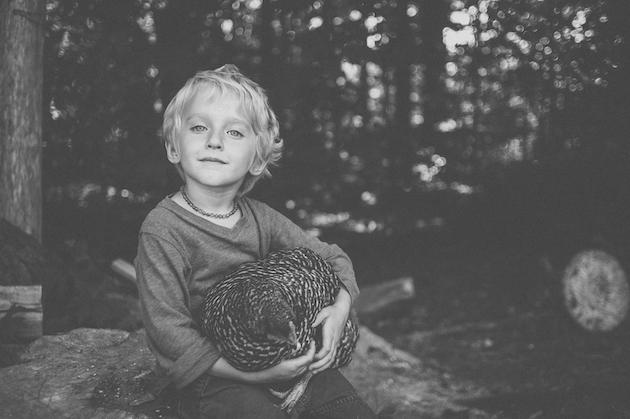
Now that you have some photos taken, what do you do? Personally, I love black and white. It’s not only beautiful and dramatic, but it also helps create workable images from poorly lit ones and helps focus attention in a busy image. I print my photographs (not all of them, of course!), pick out a handful per year and hang them in our house. For all the others, I print them out for photo albums or make a printed photo album online that I can order extra copies of for family members. It’s an easy and affordable way to print a year’s worth of images!
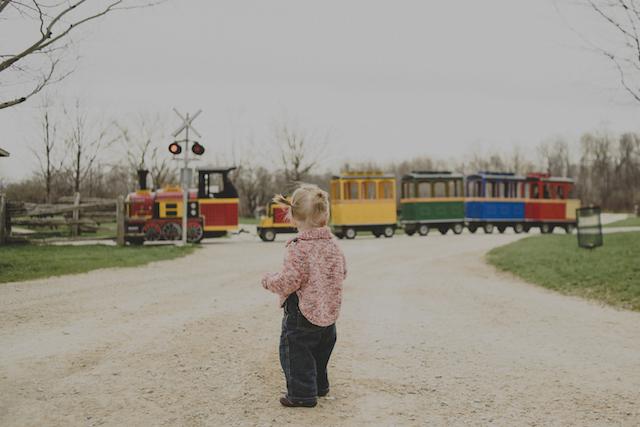
I hope I’ve motivated you to pick up your camera and give it a shot. The more you practice, the better you’ll get and progress happens quickly. Just remember, light determines the mood of the photograph, composition can tell a story, and capturing the moment brings in emotion. Using these three concepts together can create stunning images that celebrate your family, documenting the everyday in a way that reminds you of how beautiful your life is and how many special, crazy and fun people and moments fill your days. Celebrate your family and hang those images in your house or print them out in a book so you and your family can look at them regularly.
*Originally published August 12, 2016



